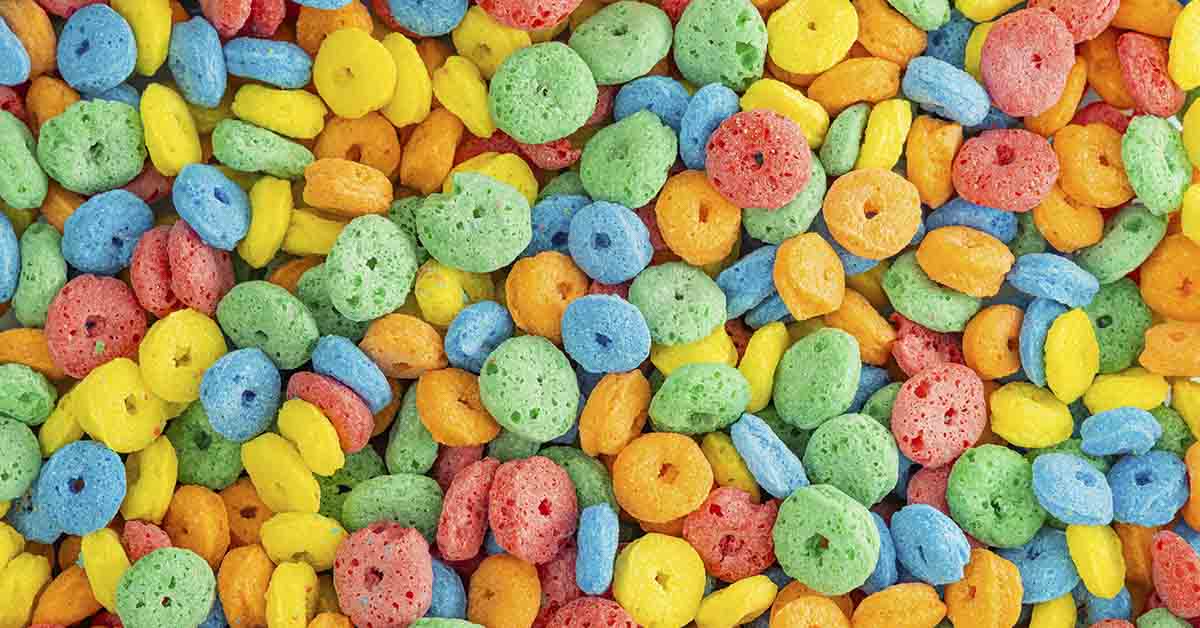For many children born around the 90’s will fondly remember Saturday morning glued to the television watching cartoons. This morning ritual was never complete without a bowl of colorful and sugary cereal. The 20th century had unique and bizarre food trends. Food companies implored dyeing their breakfast cereals unnatural and bright colors to appeal to children. On top of using artificial dye, some of which are linked to hyperactivity in children, these cereals are packed full of preservatives.
The EU and some countries globally have very stringent laws regarding certain ingredients contained in American breakfast cereals. In some countries, some cereals are outright banned for their ingredients. From artificial colors to controversial preservatives, these cereals face restrictions or bans abroad.
While the use of certain artificial dyes are heavily restricted in some regions, preservatives like butylated hydroxytoluene (BHT) face outright bans. Here are 7 everyday cereals made with banned ingredients and the reasons behind their international controversy.
1. Cap’n Crunch
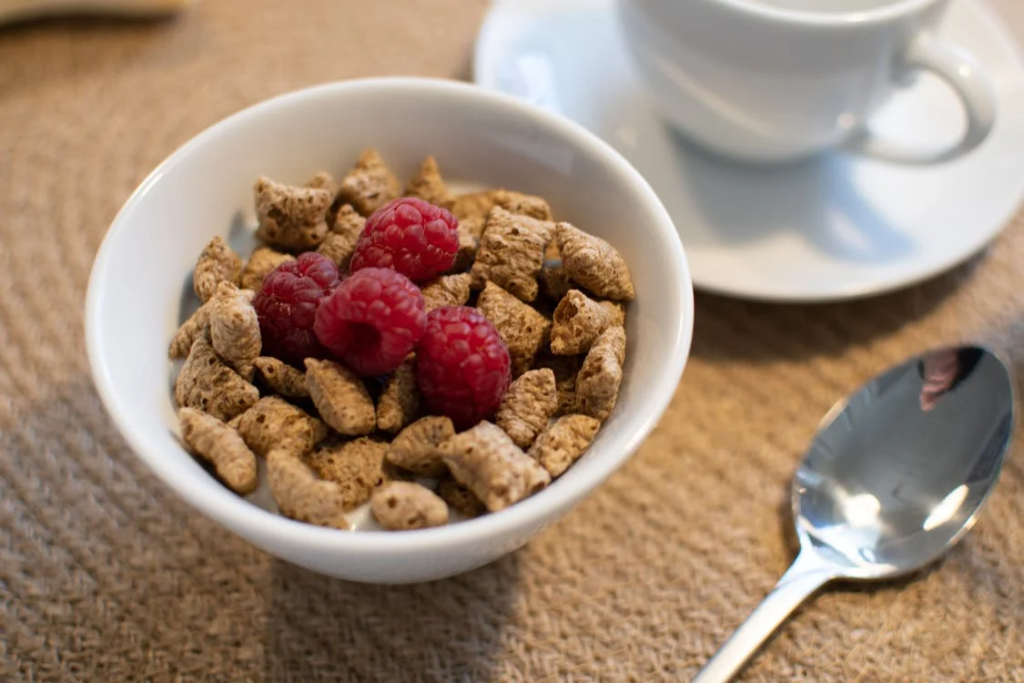
When speaking of the quintessential American cereals, Cap’n Crunch is emblematic of that. While its crunchy, sugar-coated sweetened corn and oat composition are a staple in American households, it is banned in some countries due to its ingredients. Additionally, its marketing tactics have also led to restrictions abroad.
The cereal contains butylated hydroxytoluene (BHT), Yellow No. 5, Yellow No. 6, Red No. 40, and Blue No. 1. These additives are restricted or banned in Europe and other regions. Additionally, countries like Chile and Mexico have banned cartoon mascots on sugary cereals. Cap’n Crunch’s mascot is now covered with warning labels and is not widely available in those countries.
2. Cinnamon Toast Crunch
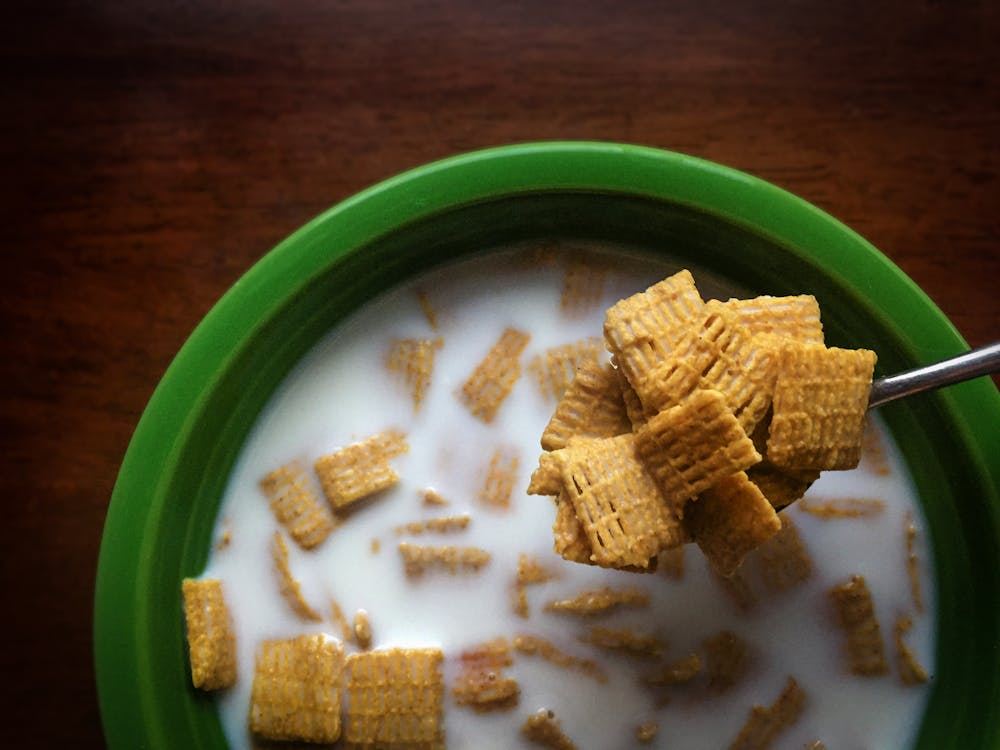
Known for its sugar-dusted cinnamon squares, Cinnamon Toast Crunch contains BHT in its American version. Since BHT is banned in many countries, General Mills reformulates the cereal for its international markets so the product complies with their food, health and safety regulations.
In Europe, it is sold as “Cini Minis” under the Nestlé brand, without BHT. Some consumers claim the taste is different, possibly due to the absence of the preservative. The U.S. version, however, is not exported to countries with BHT restrictions, making it a banned cereal in those parts of the world.
3. Corn Flakes
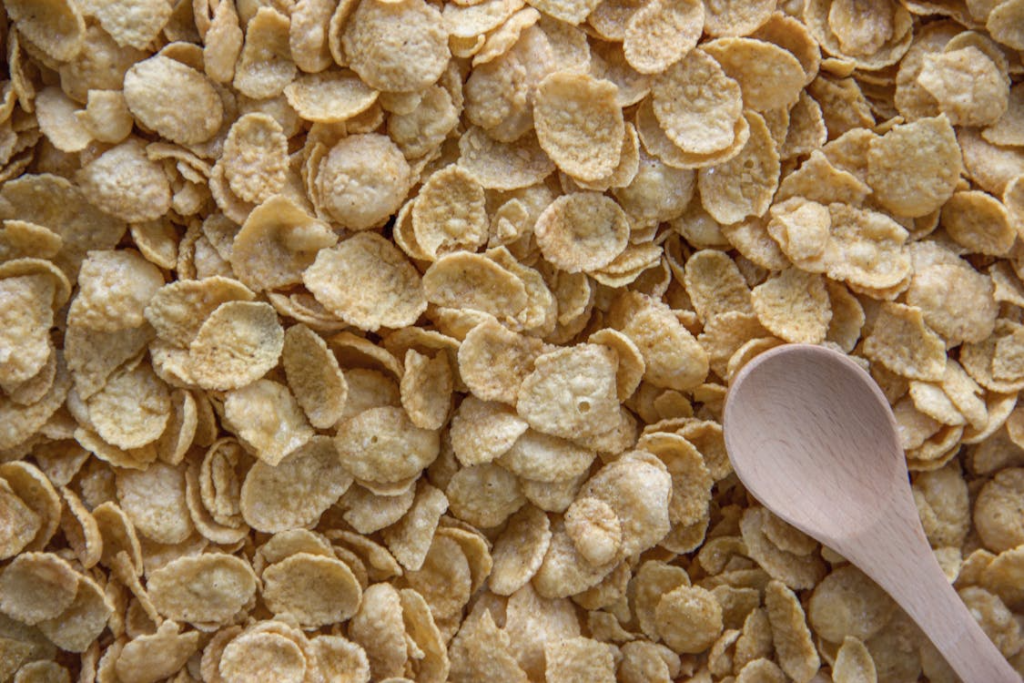
Kellogg’s Corn Flakes has always been seen as the “healthier”, classic breakfast choice. They have been providing homes with their crunchy flakes since 1906. Kellogg’s Corn Flakes face bans in various countries for different reasons. In 2004, Denmark banned Corn Flakes and Special K for excessive vitamin fortification, which could harm children’s kidneys and livers.
Kellogg’s adjusted the formula for Europe, but the U.S. version remains unchanged. In Mexico and Chile, Corn Flakes faced restrictions due to laws banning cartoon mascots on sugary foods. The Corn Flakes rooster, Cornelius, was removed from packaging to comply with these regulations.
4. Honey Maid S’mores
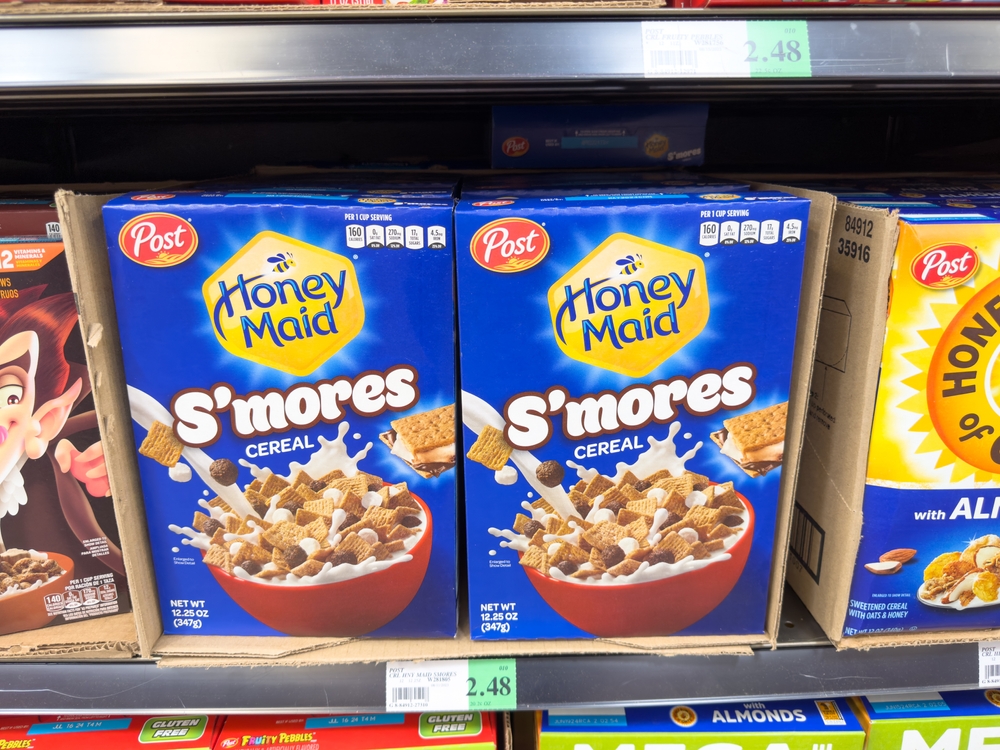
Post’s Honey Maid S’mores cereal offers a sweet, campfire-inspired breakfast. But like some of the cereals on this list, it contains BHT. Research suggests BHT and its relative BHA, which is a corrosive additive, that can harm the liver, kidneys, and lungs over time. Many countries, especially in Europe, have banned or restricted BHT in food products. As a result, Honey Maid S’mores are unavailable in those markets. Post does not alter the recipe for international sale, so the cereal remains for U.S. customers only.
5. Froot Loops
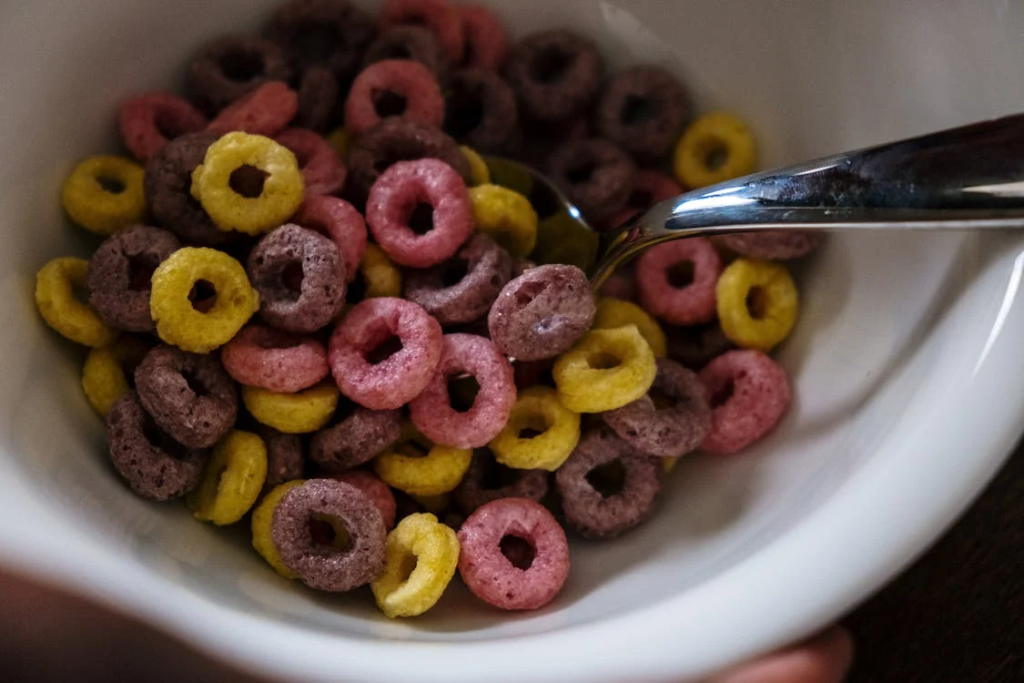
Kellogg’s Froot Loops is famous for its vibrant colors, achieved with synthetic dyes like Red No. 40, Yellow No. 5, Yellow No. 6, and Blue No. 1. It also contains BHT. While Froot Loops are sold in some countries, the recipes differ. In Australia, New Zealand, and Europe, Kellogg’s removes BHT and replaces artificial dyes with natural alternatives, such as paprika extract and fruit juices. Notably, blue Froot Loops are absent in these countries due to the lack of a natural blue coloring. In the U.S., however, the original formula remains, making it a banned cereal in several countries.
6. Lucky Charms
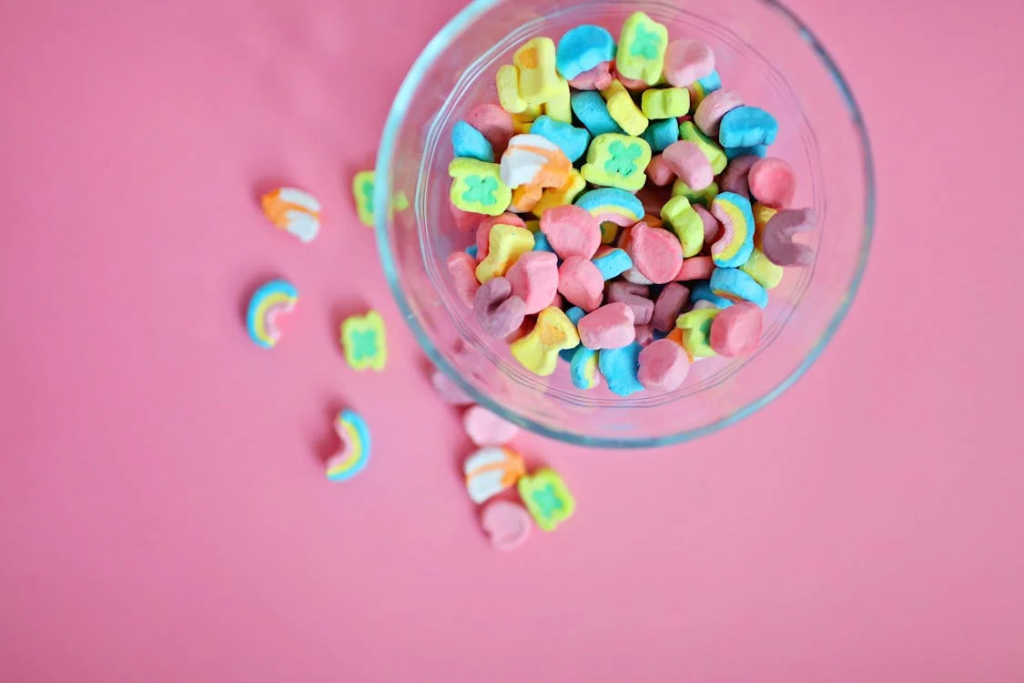
Beloved for its colorful marshmallows and sweet oat pieces, Lucky Charms uses several artificial dyes, including Yellow No. 6. This dye is banned as a food additive in Japan. While some countries allow small amounts of artificial colors with warning labels, Japan prohibits Yellow No. 6 entirely. General Mills does not modify Lucky Charms for the Japanese market, so the cereal is simply not sold there.
7. Cookie Crisp
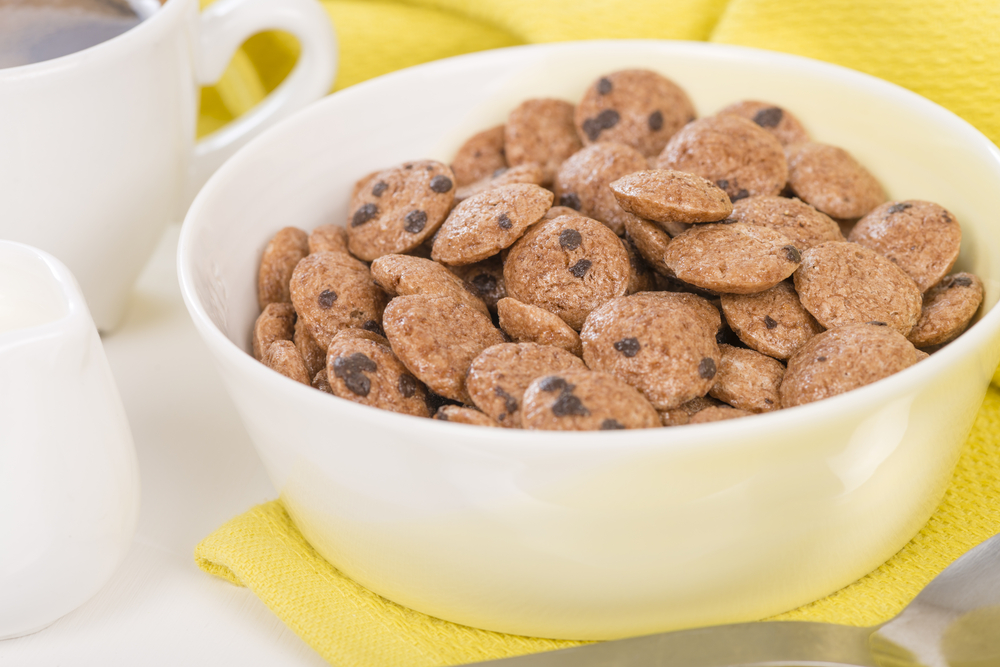
General Mills’ Cookie Crisp is fortified with vitamins and minerals, including vitamin C (sodium ascorbate). In Canada, regulations specify which vitamins can be added to breakfast cereals, and vitamin C is not on the approved list. As a result, Cookie Crisp is banned in Canada in its American form. General Mills sells a modified version in Europe without vitamin C, but Canadians looking for a similar cereal must choose alternatives like Chips Ahoy! Cereal, which complies with local regulations.
Conclusion
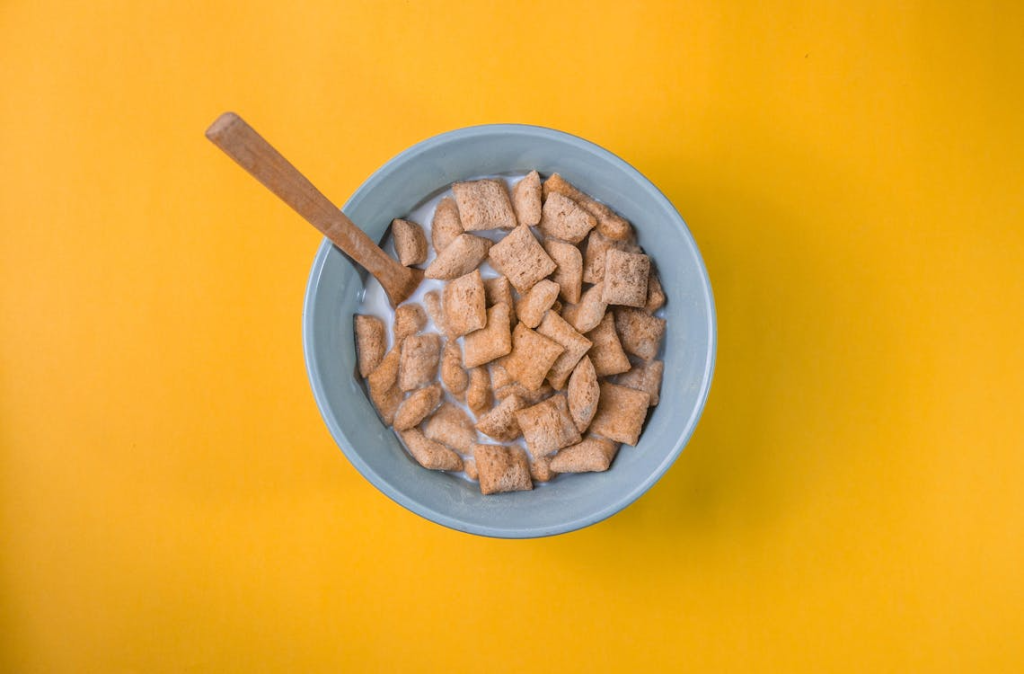
Many cereals enjoyed daily in the U.S. are banned or reformulated in other countries. This is due strict health and safety regulations and concerns over artificial colors, preservatives, and excessive vitamin fortification. These regulations reflect different national standards for food safety and marketing. If you travel outside the U.S., you might notice your favorite cereals missing from store shelves. You may also find they taste different than you remember.
Read More: This Herbal Supplement Has Been Banned in 7 States Due to Health Risks
